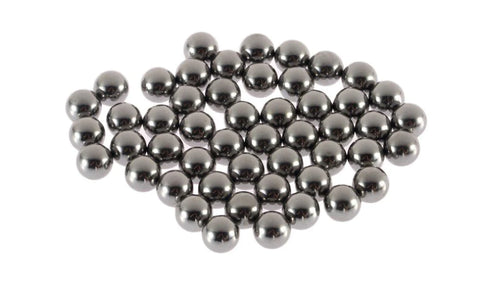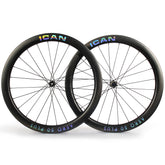Everything you need to know about bike bearings
Without the humble bearing, your bike might not go anywhere, or at least nowhere fast. Bearings are an integral part of your bike, and you probably don't even think about them. There are different types of bearings on bicycles. Can you list them?
The different types of bearings
Loose ball bearings

To reduce the chances of you dropping or losing the bearings, you can also get floating bearings in a holder. Once they are in the holder, they lose some of their performance.
These are the bearings you find in cup and cone products.

If the interface is not perfect, you will not get the quality and life expectancy that you would expect from needle bearings.
cartridge chambers/sealed bearings

Sealed bearings are now the preferred design for many bicycle parts. They fit easily into well-designed interfaces and are easy to maintain and replace when necessary. They've simplified the process of maintaining your bike's peak performance, and we're starting to find them at great prices.
dimensioning of bearings
If you need new bearings, you need to know how to size your bearings and it would also be good if you knew what sizing means.
If you need new loose ball bearings, you need to know the ball diameter. You may need to get an inch caliper to measure the old bearings. There are a few common sizes. Headsets and pedals typically have a diameter of 5/32". Front hubs typically have a diameter of 3/16". Rear wheel hubs and bottom brackets are usually 1/4".
For cartridge bearings (sealed bearings) you need to know 3 dimensions. These are often printed somewhere on the stock. Otherwise you will need the Vernier again. You need to know the outside diameter, inside diameter (bore), and width.
For example 30x42x7mm, which should fit SRAM/Truvative cranks in a BB30 bottom bracket. You may also find the number 6806 2RS in stock, which will also guide you to the correct size. You may find other similar numbers, a quick google and you should get the size.
What about my tax rate?
Things get tricky with the headset bearings. The reason for this is that you need a bearing with a slanted edge. So when you see "46.9 x 7 x 45°", the last number is an angle. The 46.9 is the outside diameter, the 7 is the thickness/width and the 45° is the angle at which the bearing sits in your frame.What do angular and radial mean?
When we talk about tax rates, we come to the question, what does "oblique" and "radial" mean? These are the 2 most common designs of cartridge bearings. Radial is the more common of the two types for the bicycle trade.
The main reason is that they are cheaper, the other reason is that many bike parts carry their load radially. This means that the load acts perpendicular to the longitudinal axis. In other words, the load acts at right angles to the shaft. Think about the bearings of your bottom bracket and the shaft of your crank.
Now it can happen that these bearings also experience lateral movement. To compensate for this, they are manufactured with a slightly lower tolerance. If they were made to a higher tolerance, they would fail when driving.
angular contact bearing
Angular contact ball bearings are manufactured to larger tolerances, which makes them more expensive. They are loaded from all directions and are therefore similar to pot and cone bearing systems. The precise tolerance with which they are manufactured gives them similar performance to floating bearings.
Be sealed
When we said earlier that you probably haven't thought about your bearings, you've probably given even less thought to the seals on your bearings. The problem, however, is that if your seals are poorly designed, your bearings won't last long.
The seals must protect the bearings, they must be easy to remove for maintenance and, most importantly, they must not cause too much friction. There will always be a little friction. This means that the seal does its job and keeps the dirt out and the grease in.
A quick note about skew seals: The red seal faces outward, the black seal faces the centerline.
How do I maintain my bearings?
If you want to maintain your bike's performance, you'll need to service your bearings at some point. To make this work as quick and easy as possible, you need the right tools for your workshop.
You will need tools for removing and installing the bearings as well as a small flat chisel. Your bearings are important, and these tools can help you ensure that you remove the bearing without damaging it and then properly align it back into its interface.
Using the thin pick, pull the gasket away, work your way around the outside of the gasket, and slowly lift it off, being careful not to damage it. You can then wash out the old grease with a degreaser and dry the bearings. Certain citrus degreasers can leave a residue on the bearings that slows them down, so be careful.





